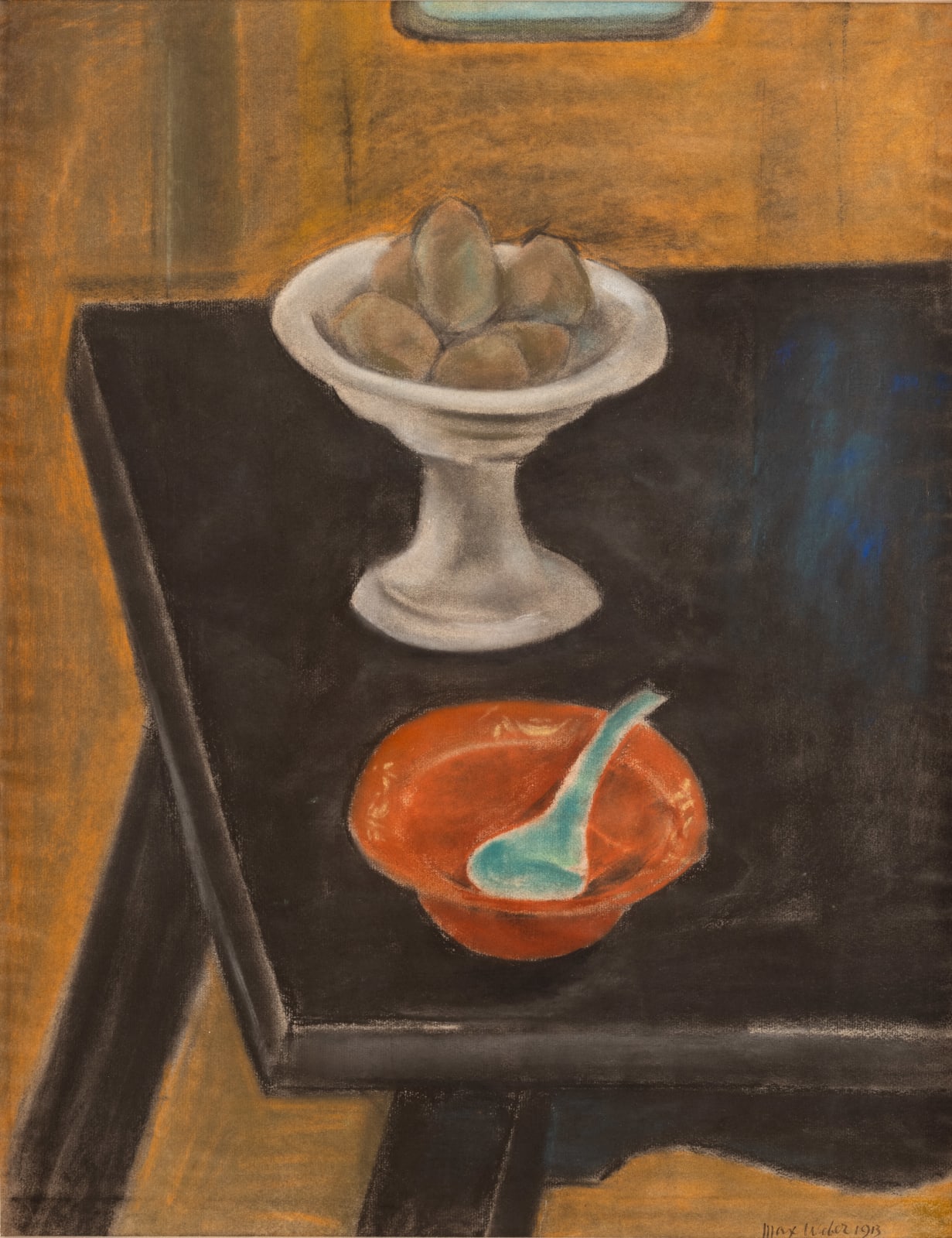-
Artworks
Max Weber American, 1881-1961
Still Life, 1913Pastel on paper24½ x 18¾ inches
62.2 x 47.6 cmSigned and dated at lower right: Max Weber 1913Schoelkopf Gallery is the exclusive worldwide representative of the Max Weber Foundation. In Still Life (1913), Max Weber explored visually engaging cropping effects by excluding the right half of the...Schoelkopf Gallery is the exclusive worldwide representative of the Max Weber Foundation.
In Still Life (1913), Max Weber explored visually engaging cropping effects by excluding the right half of the table from the composition. This style of visual cropping bears a resemblance to the techniques employed in photography in the early twentieth century. While living and working in New York, Weber forged connections with various artists, among them photographer Clarence H. White. Together, they established a School for Photography in 1914.
Provenance
The artist; to
Estate of the artist, 1961; to
Max Weber Foundation, 2021 until the presentExhibitions
Gerald Peters Gallery, New York, Max Weber: Painting the Object, Four Decades of Still Life Painting, May 8–26, 2006
Schoelkopf Gallery, New York, Max Weber: Art and Life Are Not Apart, January 19–April 5, 20241of 2
Subscribe to our mailing list to receive updates from the gallery
* denotes required fields
We will process the personal data you have supplied in accordance with our privacy policy (available on request). You can unsubscribe or change your preferences at any time by clicking the link in our emails.

